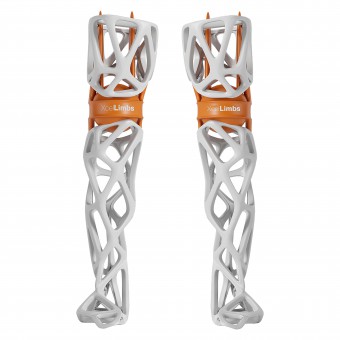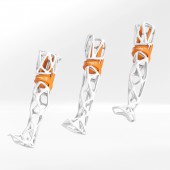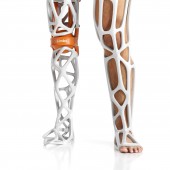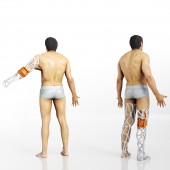DESIGN NAME:
Xcel
PRIMARY FUNCTION:
Prosthetic Limb
INSPIRATION:
The inspiration behind Xcel Limbs stems from the desire to address the profound psychological impacts of limb loss and promote societal integration. Drawing from the advancements in wearable technology and prosthetic design, the goal is to empower users to lead fulfilling lives despite their physical challenges.
UNIQUE PROPERTIES / PROJECT DESCRIPTION:
The key innovation lies in the integration of smart wearable technology and intelligent algorithms, making Xcel Limbs not just a passive prosthetic but an active, adaptable device. It collects real-time user activity data, adjusts to individual needs, and enhances the overall user experience. The use of advanced 3D simulation technology ensures a highly realistic and seamless integration into daily activities, promoting confidence and normalcy for users.
OPERATION / FLOW / INTERACTION:
Smart wearable, prosthetics, 3D simulation technology, personalized design, societal integration, sustainability, advanced manufacturing.
PROJECT DURATION AND LOCATION:
12.19.2022-12.26.2023, China, United States of America.
|
PRODUCTION / REALIZATION TECHNOLOGY:
Xcel Limbs utilizes cutting-edge production technologies such as 3D scanning and printing for precise customization. High-strength resins and environmentally friendly materials are selected for construction, ensuring both durability and sustainability.
SPECIFICATIONS / TECHNICAL PROPERTIES:
The production process involves advanced techniques such as smart model algorithms for personalized prosthetic designs. These algorithms analyze anthropometric data to create prosthetics that closely match the user's anatomy and preferences.
TAGS:
Smartwearable, prosthetics, 3Dsimulationtechnology, personalizeddesign, societalintegration, sustainability, advancedmanufacturing
RESEARCH ABSTRACT:
Type of Research: Design Research
Research Objectives:
Investigate the psychological impacts of limb loss.
Identify technological advancements in prosthetics.
Explore sustainable materials for prosthetic manufacturing.
Methodology: Mixed methods approach involving literature review, interviews with prosthetic users and experts, and prototyping.
Data Collection and Research Tools Used: Surveys, interviews, 3D scanning and printing technology, prosthetic simulation software.
Participants or Experiments: Prosthetic users, medical professionals, materials scientists, and designers.
Results: Identified the psychological challenges amputees face, analyzed prosthetic technology trends, and evaluated sustainable materials for prosthetic construction.
Insights and Impacts: Highlighted the need for personalized prosthetic solutions to address psychological well-being. Informed the development of Xcel Limbs, integrating smart technology and sustainable materials to improve user experience and societal integration.
Effect of the Research in Real-Life Phenomena: The research contributes to advancements in prosthetic design, promoting inclusivity and sustainability in healthcare. It addresses the pressing need for holistic solutions that enhance amputees' physical and emotional well-being.
CHALLENGE:
Balancing innovation and user-centric design in Xcel Limbs was daunting. Historically, prosthetics prioritized function over emotion. Externally, regulations and tech limitations posed hurdles. Yet, by focusing on user needs and tech advancements, we crafted a holistic solution.
ADDED DATE:
2024-02-28 01:45:47
TEAM MEMBERS (2) :
Risheng Liang and Sauman (Sue) Chu
IMAGE CREDITS:
Risheng Liang was mainly responsible for creativity and design.
|









